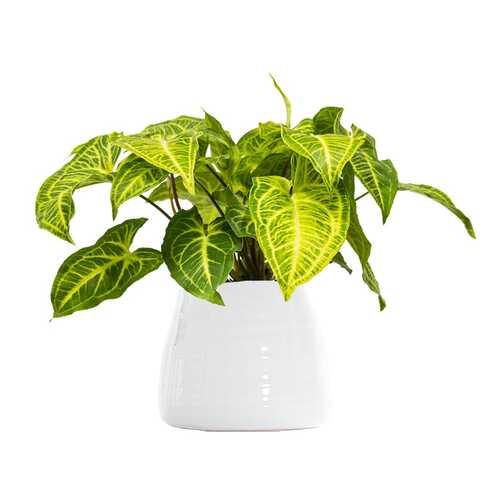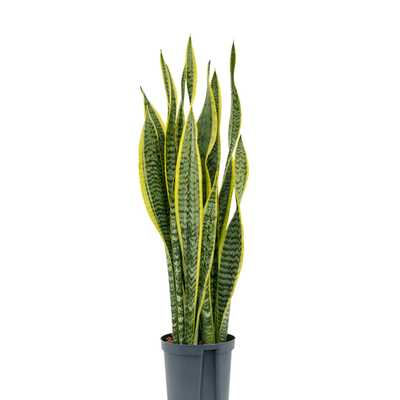Call US : 989124548005
Zamioculcas Zamiifolia
0 USD
Short Description:
Zamioculcas Zamiifolia, or the ZZ, is a rhizome plant with small, fleshy, shiny leaves. The evergreen plant resembles a palm tree with stems that can reach up to 3 feet long.Overall features of Zamioculcas Zamiifolia
Zamioculcas Zamiifolia, or the ZZ, is a rhizome plant with small, fleshy, shiny leaves. The evergreen plant resembles a palm tree with stems that can reach up to 3 feet long. Certain stems from the plant grow vertically, while others exhibit a curved arch. This may prompt you to trim peculiar-shaped stems and maintain the plant's fullness and desired look. The flowers (1 to 2 cm in size) bloom in the lower layers. The time to see them is in mid-summer to early autumn.
Zamioculcas Zamiifolia has some other names, including ZZ Plant, Aroid Palm, Arum Fern, Eternity Plant, as well as Aroid Plant.
The adaptable plant can cope with low but bright light and varying amounts of water. Nonetheless, the amount of light is crucial when it comes to watering; if there’s more sunlight, then you should increase watering times.
Origin
The plant comes from East African countries such as Tanzania and Zanzibar and belongs to the Araceae Family.
Light:
Bright light is recommended; however, low light is ok. The ZZ will grow best in a place with medium light. If there’s too much sunlight at your place, place it in a shelter where there is no direct sunlight. Severe light burns the edges and tips of leaves.
Watering:
When the top inches of the soil are dry, it is time to water the plant. Avoid overwatering. To ensure the plant’s health, water it conservatively rather than excessively. Excess water will make the leaves turn yellow and fall off, and the underground stems will decay, eventually leading to the death of the entire plant. Therefore, it is recommended to water the plant only when the soil has dried to a depth of approximately 2 cm. Never allow water to accumulate around the plant's roots, especially during winter. This is because the plant is less active during colder temperatures and is highly sensitive to prolonged moisture in the soil. Conversely, it is essential not to let the plant become too dry either, as this will also cause the leaves to fall off. To determine the moisture level of the soil surface, it is recommended to check the soil at a depth of 5 cm to ensure that it is adequately moistened.
Soil:
A variety of light soil mixtures can be used. For instance, a combination of regular soil with leaf soil and sand or cocopit with perlite and sand can be used. When the plant's roots start protruding from the drainage holes at the bottom of the pot, you need to change the pot.
Early spring is an appropriate time to replace the pot. Remember to enhance drainage in the pot by placing a few pieces of pottery or small rocks over the drainage holes.
The easy-to-care-for plant does not require monthly feeding, nor does it thrive without any fertilizer at all. Due to its relatively robust growth and foliage and composition of its soil, it benefits from being fortified with fertilizers. From April to August, when the plant grows best, you can apply fertilizer once in a month. If you have concentrated fertilizer, dilute it by half before application, as Zamophilia generally has a slower growth rate and does not require excessive fertilization. Cease fertilization from fall to spring.
When caring for the zamophilia flowers, it is important to apply the fertilizer to the soil after watering. This allows for proper absorption of the nutrients and prevents the fertilizer from causing damage or burning the plant.
Humidity and temperature:
The standard temperature rate for the plant ranges from 15 to 24 degrees Celsius. Avoid temperatures below 8 ° C. When the temperature dips below 10 degrees, the plant's leaves become notably pale. The challenges posed by colder temperatures primarily stem from insufficient soil moisture rather than the cool air temperature itself. As the weather cools (approaching 15 degrees), the plant's activity and water requirements decrease. Consequently, watering the plant in the same manner as during warmer temperatures would actually cause rotting and eventual death.
It does fine at home humidity; however, if your place is a bit hot and dry, you should raise humidity levels. Adequate moisture benefits the ZZ as leaves start flourishing.
Note:
Considering that the plant contains calcium oxalate, it might cause problems for skin or gastrointestinal tract. So, it is advisable to wear protective gloves when touching the plant to ensure safety. Also, keep it away from children and pets.
Brief overview:
Botanical name: Zamioculcas Zamiifolia
Family: Araceae Family
Plant’s classification: Ornamental houseplant
Requirements: Bright indirect light, moderate light, usual home humidity, well-draining soil
| Colors : | Green, Black, Black |
| Height : | 15cm, 30cm, 60cm |
| Pot (Liter) : | 1.4, 4, 7 |
Product Reviews
Similar Products
List of similar products that you can see

Yucca’s
0 USD

Yocca
0 USD

Zamioculcas Zamiifolia
0 USD

Syngonium’s
0 USD

Spathiphyllum
0 USD

Schefflera
0 USD

sansevieria
0 USD

Pothos Silver Splash
0 USD

Pothos adanson
0 USD

.jpg)
.jpg)
.jpg)
